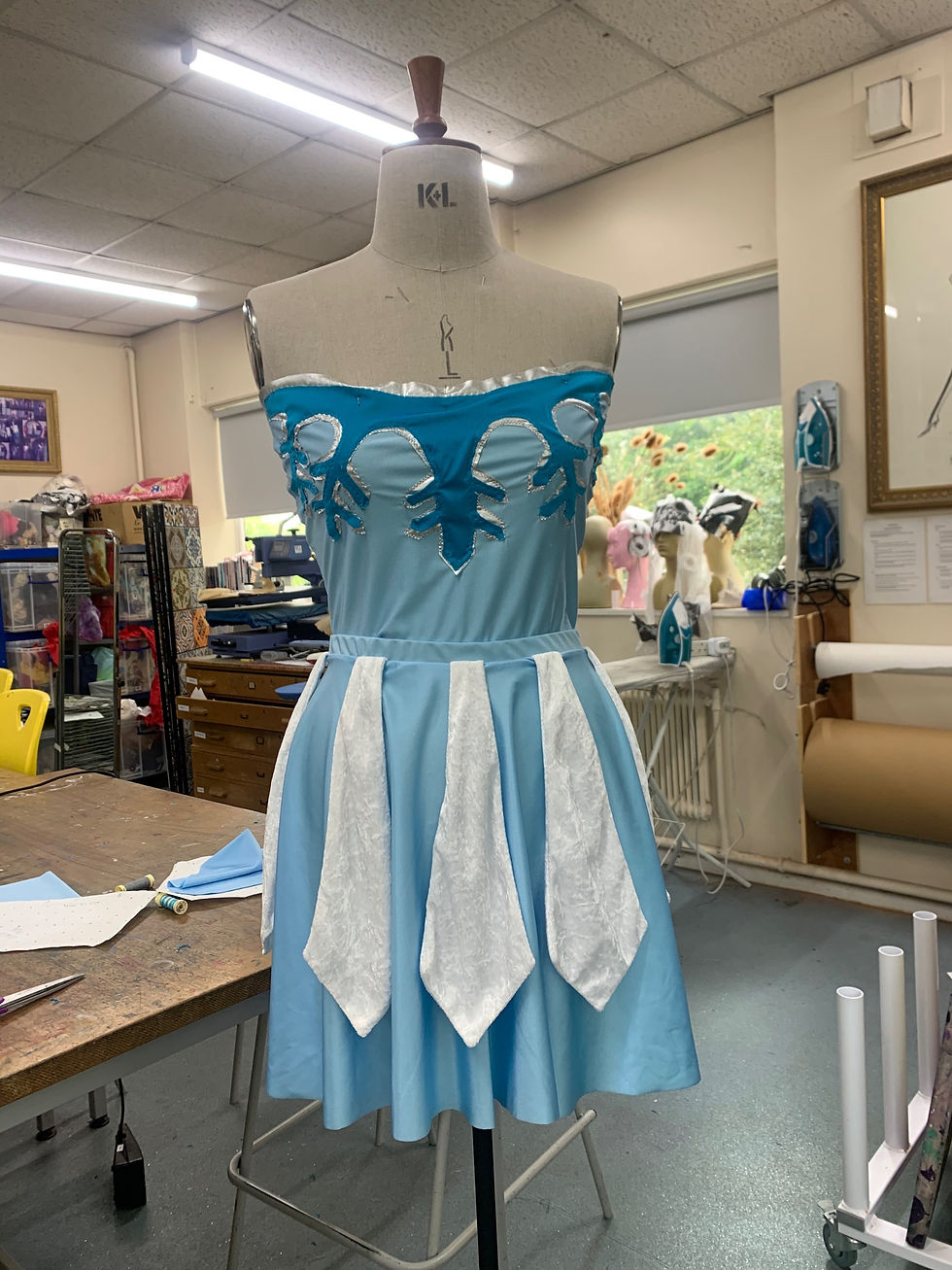WHITE IN FASHION
- Louise Love
- Sep 6, 2022
- 2 min read
As part of my new white-on-white project, I have been researching into the significance and history of the colour white within fashion to help give me some inspiration for my garment design and to further understand the context of the theme/concept.
White In Fashion

White has been popular in fashion since around the late 18th/early 19th century and is still wildly popular today. The colour white represents positive connotations such as joy and happiness; peace and tranquility as well as symbolizing luxury and new beginnings; hence relating it to traditional use in wedding dresses.
During the 18/19th century, the white dress was seen very much as a symbol of wealth and luxury, for it was difficult to wash and re-use. - Many women of a lower class would even make these sorts of dresses from cheap cotton/linen textiles in the hopes to imitate the look of the rich.
Looking back in history, the white dress was first seen to be fashionable in France in the 1780s, where the ‘chemise gown’ came about - its name derived from the traditional chemise undergarment, worn beneath clothing to protect the dress from contact with sweat or catching in the legs. The chemise gown was made in the same lightweight fabrics of the undergarment, such as cotton and linen. This further leads on to the idea of the white dress providing a ‘naked’ look that was meant to pronounce and enhance the beauty of the human form; rather than concealing it. - It was often said that women who wore white wanted to appear more desirable; the colour white signifying this figure of luxury and, in this sense, perhaps temptation.

During her marriage to Prince Albert in 1840, Queen Victoria was largely renowned for making white the popular colour in bridalwear. She alsowore a lot of white lace often, especially for her diamond jubilee in 1897, showcasing her extreme wealth and high status.
From this point onward, the white dress continued to be particularly significant within fashion; wartime brides would borrow or make their own dresses and the 1950s sought to the introduction of the ballerina-style dress, with a tightly nipped-in waist and fuller skirt. By the sixties the white dress styles became popular in much shorter lengths; and by the 70s bridalwear became largely competitive within the business industry.
Princess Diana’s iconic bridal dress of the 80s consisted of a large voluminous skirt, extravagant puff sleeves and ruffles.

White continues to be popular in the fashion trends of the contemporary world, including iconic looks such as Kate Middleton’s Alexander McQueen wedding dress. And Designers today have been continually inspired by the trend…

Having looked into the history of white within fashion, I’d be interested to see how I can incorporate some of the much more traditional styles and techniques into my design ideas to create something really unique and interesting.













Comments